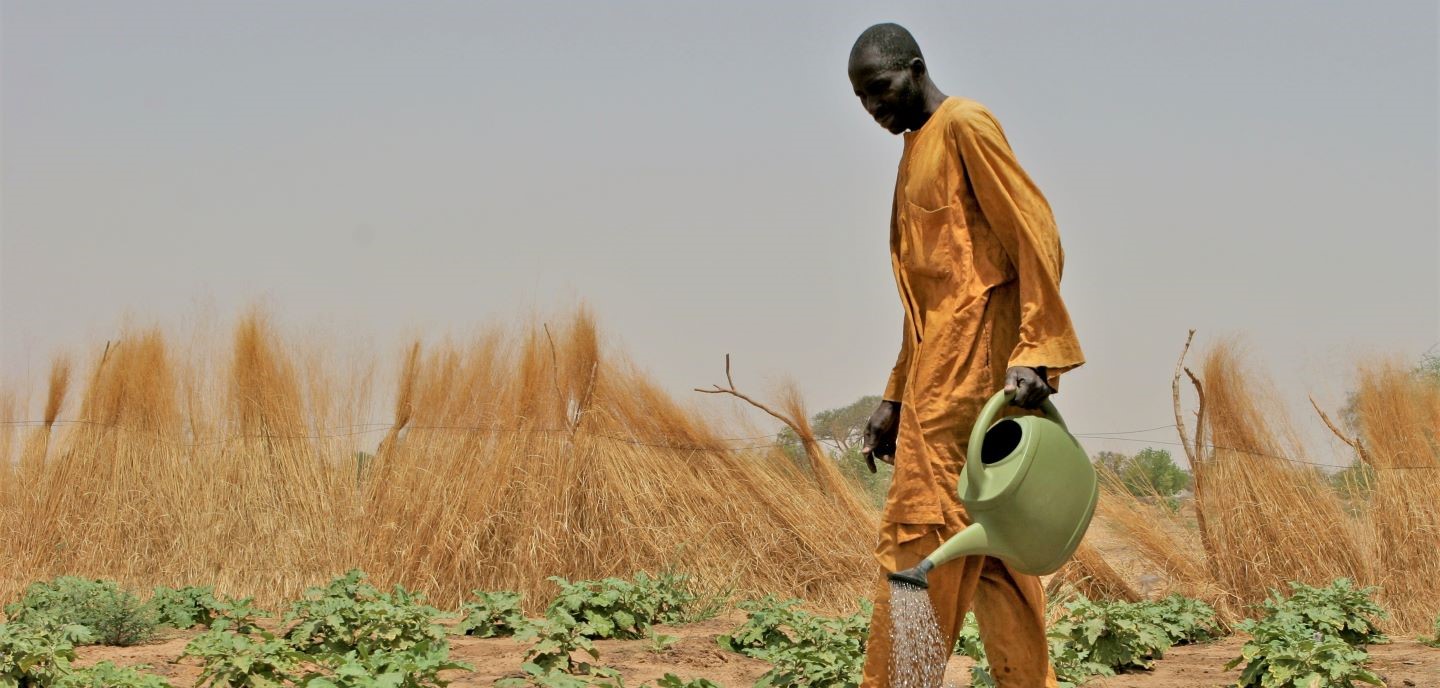In essence, climate adaptation means avoiding the unmanageable and managing the unavoidable—and for the millions of poor rural people around the world, it is urgently needed. These people have contributed the least to climate change but are suffering its consequences the most—as witnessed by the historic flooding in Pakistan and the worst drought East Africa has seen in forty years.
Acknowledging this urgent need, UNEP’s Adaptation Gap Report assesses yearly progress on climate adaptation—and identifies the gap between where we are and where we need to be.
As an expert reviewer and member of the report’s Steering Committee, IFAD’s Associate Vice-President of the Strategy and Knowledge Department, Jo Puri, shares her impressions on what this year’s report reveals.
What finding surprised you most?
First, adaptation needs are getting quantified! More than eight in ten countries now have at least one adaptation planning instrument, while measurable and time-bound adaptation targets are becoming more commonplace. What’s more, these instruments are evidence-informed and inclusive, with almost 90% of adaptation laws and policies studied referencing at least one disadvantaged group. This is all good news.
Second, global adaptation efforts are making incremental progress yet, despite commitments to close it, resources are failing dramatically to meet global needs.
Third, even ambitious investments in adaptation cannot entirely prevent the greatest impacts of climate change, such as losses and damages.
Why is the finance gap widening?
Despite some progress, the adaptation finance gap in developing countries continues to widen.
International adaptation finance to developing countries reached US$29 billion in 2020. While this is a 4% increase compared to 2019, annual adaptation needs are expected to reach an average of US$ 202 billion per year by 2030.
Adaptation and mitigation finance flows in 2020 fell far short of the US$100 billion pledged to support developing countries.
At COP26, countries agreed to double their commitment to adaptation finance by 2025. But the report finds that even achieving this target is insufficient to address the adaptation finance gap.
In short, we’re simply not investing enough to match the commitments the world has made or reflect the accelerating climate impacts we are witnessing every day.
What is needed to close the gap?
As new crises unfold, like the war in Ukraine, we must not let one urgency drown out another. Climate change is a risk multiplier—impacting things like conflict, migration and food insecurity—so we cannot let it slip down the global agenda. We need transformative action that addresses the root causes of climate vulnerability, rather than incremental, short-term and narrowly-focused plans.
So, what can be done? Deep political will and long-term adaptation investments are needed urgently. Funding partners must invest in actions that are proven to reduce climate vulnerability. By considering adaptation-mitigation linkages, benefits can be enhanced and trade-offs limited (to some extent). We need more and better research, planning, finance, international cooperation and adaptation-focused measurement. When we find long-term adaptation strategies that work, we must promote and scale these.
What is IFAD doing to close the gap?
For more than a decade, IFAD has prioritized adaptation finance. In 2019-20, 92 per cent of IFAD’s climate finance was for climate change adaptation. We’re stepping up investments in building small-scale farmers’ long-term climate resilience by dedicating 40 per cent of core resources to climate action from 2022-24. So far, IFAD has invested more than US$ 1.2 billion into climate adaption.
And we know these investments work. An assessment of IFAD’s projects closing in 2021 found that project participants were 13 percent more resilient to shocks, including those caused by climate change, than farmers in comparison groups.
To tackle the adaptation gap, IFAD programmes are catalysing investments in small-scale agriculture. For example, the Adaptation for Smallholder Agriculture Programme (ASAP) scaled up effective approaches to tackling climate change in developing countries, including digressive insurance, agroecology, and deforestation-free value chains.
The latest iteration of the programme, the Enhanced Adaptation for Smallholder Agricultural Programme (ASAP+), builds on lessons learned from ASAP. It is expected to be the largest fund dedicated to channelling climate finance to small-scale producers.
Thanks to IFAD’s Private Sector Financing Programme (PSFP), we can structure financing arrangements with the private sector to help rural people find jobs, strengthen their livelihoods, upskill and increase in their outputs while decreasing in negative environmental impacts.
Using innovative, inclusive and proven practices, IFAD will direct resources to low-income countries that depend heavily on agriculture and face the biggest challenges in terms of food insecurity, rural poverty, fragility, capacity and vulnerability to climate change.
